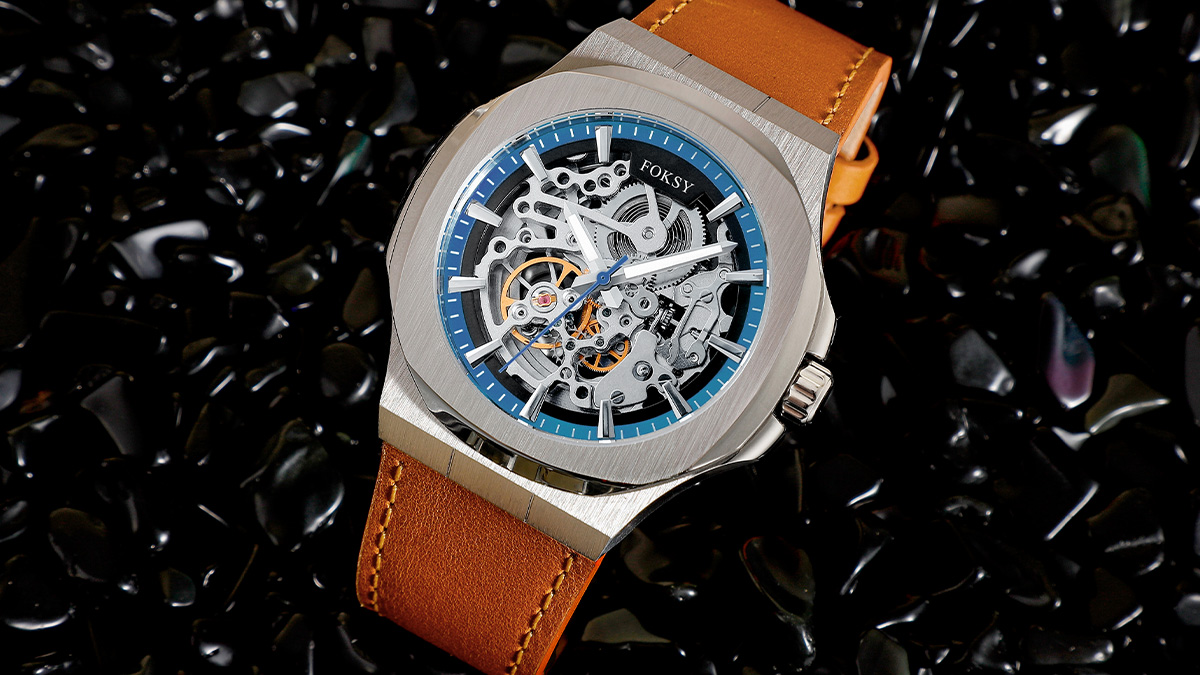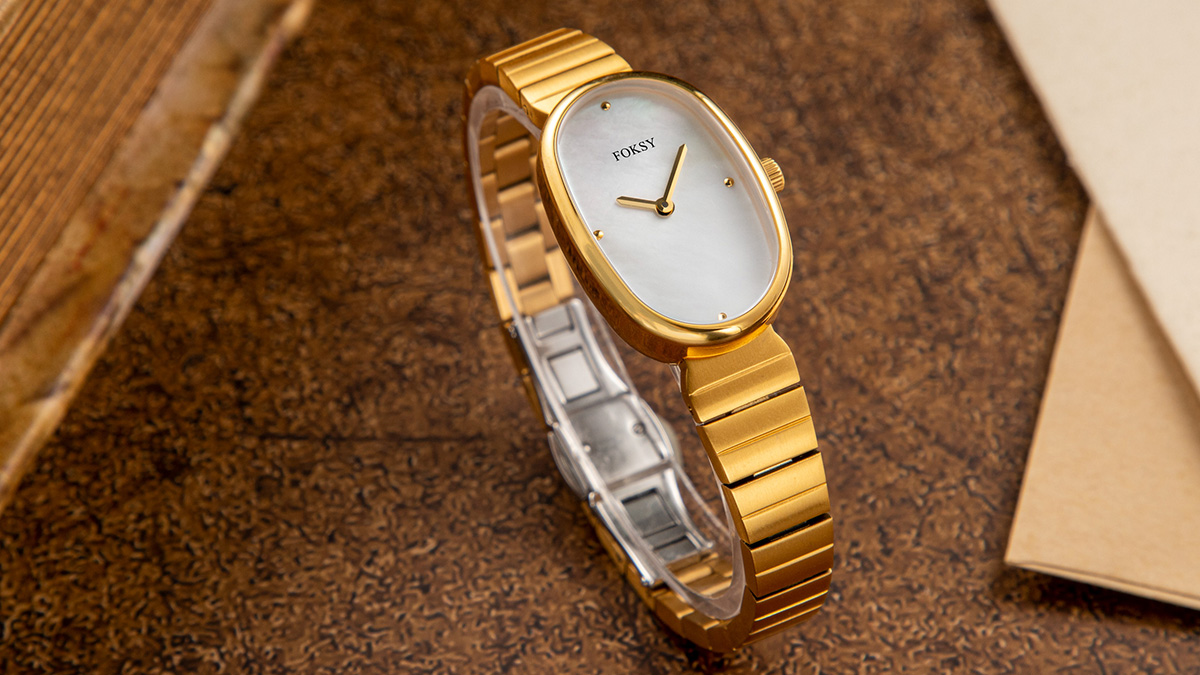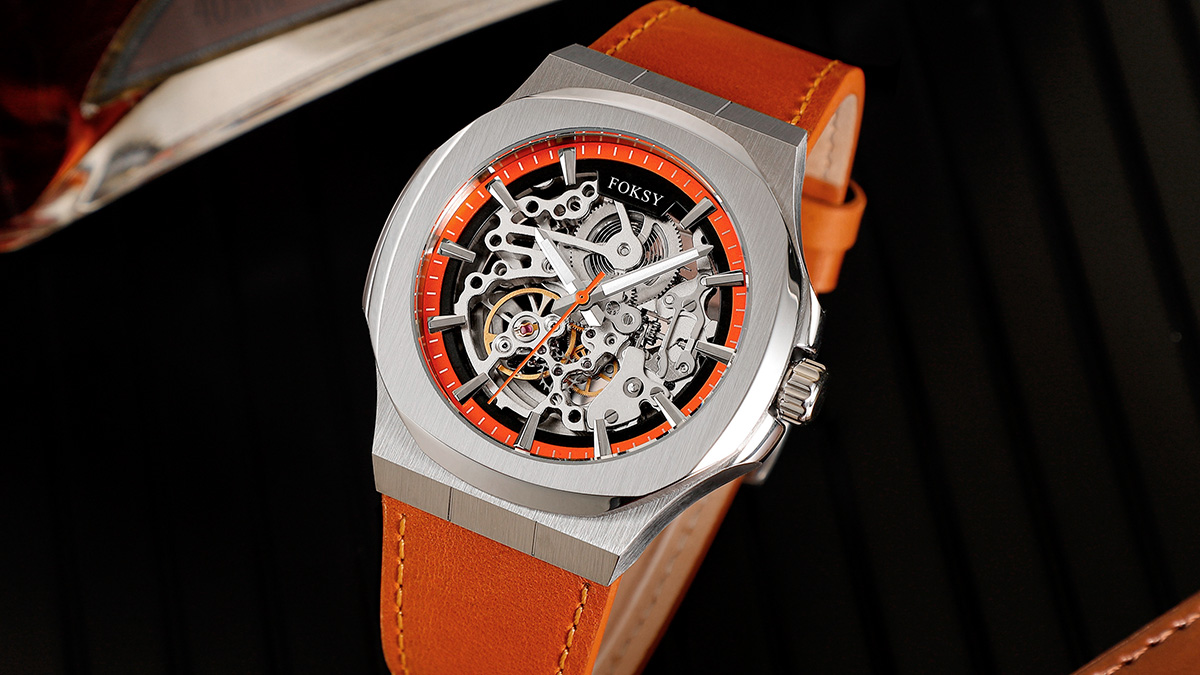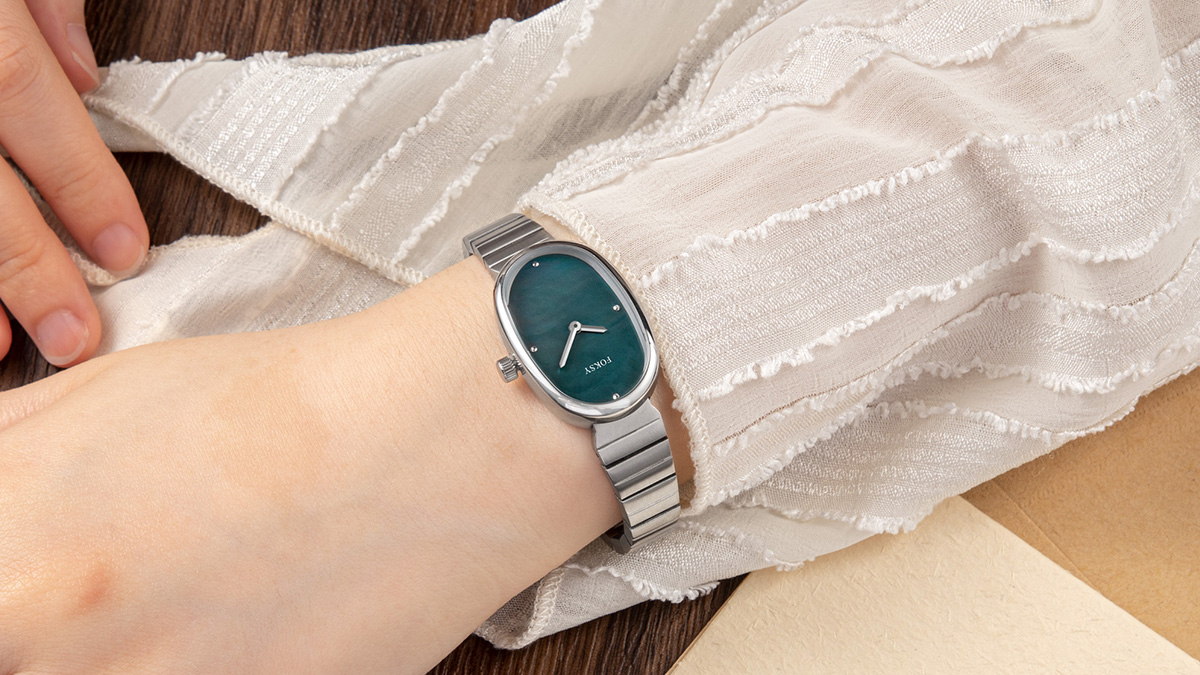 Foksy Watches
Foksy Watches  2025-06-12
2025-06-12
The following is a detailed comparison of mechanical watches and quartz watches, as well as a comprehensive analysis of the core parts and details of watches:
1. Power source
Mechanical watches:
Manual winding: The crown is used to manually rotate the spring to store energy (power storage is usually 24-72 hours).
Automatic winding: The swing of the wrist when worn drives the rotor to wind the spring.
Relying on mechanical structure, no battery.

Quartz watch:
Powered by battery (usually 2-5 years of life), the circuit drives the quartz crystal oscillation (frequency 32768Hz)

2. Accuracy
Mechanical watch: Daily error ±5~30 seconds (high-end observatory certified watch ±4 seconds/day).
Quartz watch: Monthly error ±15~30 seconds, the accuracy is far superior to mechanical watches.
3. Maintenance and life
Mechanical watch: Regular maintenance (once every 3-5 years), lubrication of the gear set, life can reach decades or even hundreds of years.
Quartz watch: Just replace the battery, the maintenance cost may be high after the circuit ages.
4. Price and value
Mechanical watches: complex craftsmanship (such as Patek Philippe, Lange), high-end models are collectible.
Quartz watches: affordable (Casio, Swatch), but high-end quartz (such as Grand Seiko 9F movement) is also accurate and expensive.

5. Feature comparison
Features Mechanical watch Quartz watch
Power Spring energy storage Battery power supply
Error Daily difference Several seconds Monthly difference Several seconds
Thickness Thicker (complex movement) Thinner
Complex functions Can integrate tourbillon, perpetual calendar, etc. Multi-function (chronograph, alarm, etc.)Scenario Collection, business Daily, sports
6. Common external parts
Case: materials include stainless steel, titanium, ceramic, and precious metals.
Glass: mineral glass, sapphire glass (scratch-resistant) or acrylic (vintage).
Dial: displays time and may contain luminous coating (Super-LumiNova). Crown: for timing/winding, push-in or screw-in (waterproof design).
Strap/Bracelet: leather, metal chain, rubber/NATO strap.

7. Purchase suggestions
Pursue precision and convenience: choose a quartz watch (such as Casio G-Shock).
Love mechanical craftsmanship: choose a mechanical watch (entry-level: Seiko 5; high-end: Omega Seamaster).
Pay attention to details:
Movement type (ETA/Sellita vs. self-produced movement).
Case material wear resistance (such as ceramic vs. stainless steel).
Waterproof requirements (diving watches require screw-in crowns).
By understanding these details, you can choose or appreciate watches more professionally. Whether it is the artistry of mechanical watches or the practicality of quartz watches, they all reflect the precision and innovation of the watchmaking industry.
Focus On Customize Watches
For Micro Brands
Room C201, Huafeng Wisdom Innovate Park, Gushu 2nd Road, Bao'an Dist, Shenzhen, China.
